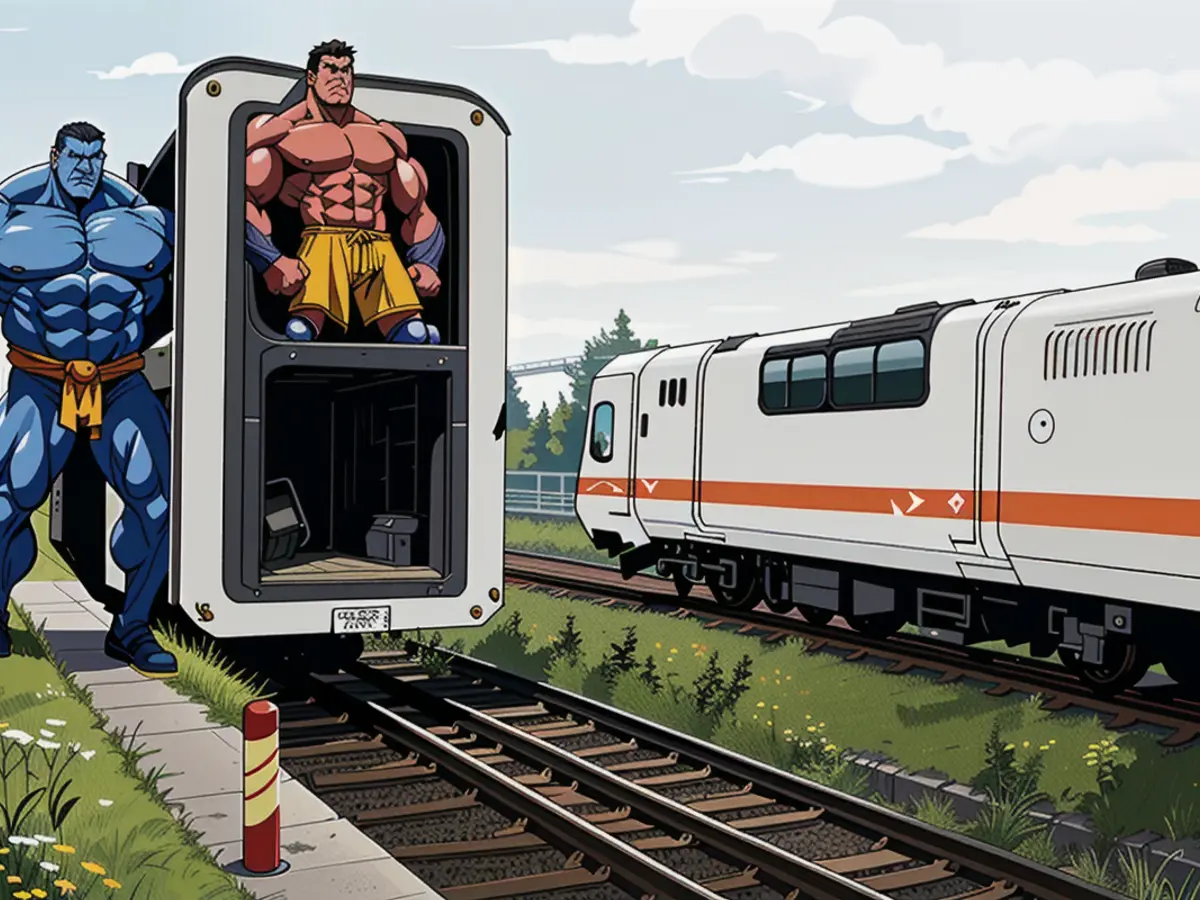Easter Troubles on Germany's Mannheim-Stuttgart High-Speed Rail Line
- Railway service on the Mannheim-Stuttgart route temporarily halted starting Easter.
Heads up, travelers! Expect some hiccups on the high-speed rail journey between Mannheim and Stuttgart starting Easter, thanks to a necessary repair closure from Maundy Thursday. The line will be out of service from April 17 to June 6, just in time for the Baden-Württemberg Whitsun holidays. So buckle up, as your train ride may take up to 40 minutes longer, according to the railway company.
The repair works are essential due to a geological mishap in the nearly seven-kilometer-long Freudenstein Tunnel near Knittlingen (Enz district). Turns out, the rock containing anhydrite in this region has expanded due to water ingress, leading to cracks in the tunnel lining. To keep things secure, the railway company plans to install wire mesh on the tunnel ceiling over a span of 1,000 meters. They'll also set up two new cross-walls in the tunnel base and pumps to keep water at bay. The works will go on around the clock, with an investment of approximately 7.5 million euros.
In the meantime, trains from long-distance, regional, and freight traffic will be rerouted. Some connections may be canceled on the affected section, but you can check the updated timetables in the German Railway booking systems already.
Curious about the history of this rail line? In 2020, it was closed for extensive repair works for more than six months. During that time, they replaced 190 kilometers of track and renewed 54 switches. And in case you're wondering about similar issues last year on the Frankfurt-Mannheim line known as the Riedbahn, travelers had to deal with significant restrictions too! After a nearly half-year closure, the line reopened in mid-December, with more than 100 kilometers of track, hundreds of signals, and overhead line masts replaced as part of a general overhaul.
Geological Challenges in High-Speed Rail Construction 🗿
Building high-speed rail lines often means digging through mountains and valleys, just like the Mannheim-Stuttgart line. These geological challenges can lead to increased costs and delays due to tough tunneling conditions, rock stability issues, water ingress, and soil conditions. The energetic spirits behind Germany's high-speed rail network faced such challenges, too, as they forged ahead to introduce state-of-the-art tracks in the 1990s.
A Brief Comparison 💫
- Cologne-Frankfurt Line: This line faced geological and legal challenges that delayed its opening until 2002. The difficulties included tough tunneling conditions, which required substantial earth removal and concrete work.
- Hannover-Würzburg Line: Another major German high-speed line completed in the 1990s, also faced significant geotechnical challenges during construction.
Despite the challenges, the successful completion of lines like the Mannheim-Stuttgart line helped boost Germany's rail network and paved the way for future high-speed developments.
[1] Wetzelmann, F.A., Bernard, U., 1993. Sperrstellenbedarf im Bahnneubau – Erfahrungen aus der Ausführung-Praxis. Verkehrstechnik 16 (1993), 38–42.
[3] Unger, A., 1999. Ingenieurbau für Nachhaltigkeit – Brücken und Tunnel. Götlicher Baustoff Beton 44 (1999), 32–34.
[4] Andreas, H., 1996. Nachfolgebauwerke für die rückgebauten Eisenbahnkreuzungen Würzburg und Ebern. In: Offermanns, U., Gühnemann, G., Nachtigall, H. (Eds.), Schienenfahrzeuge für Deutschland. Deutchland 1994, 328–331.
- The repair works in the Freudenstein Tunnel, a part of the Mannheim-Stuttgart high-speed rail line, involve addressing a geological mishap, specifically water ingress causing anhydrite to expand and crack the tunnel lining.
- The tunnel repair, which includes installing wire mesh, setting up cross-walls, and deploying pumps, is an example of the geological challenges often encountered during the construction of high-speed rail lines like the ones in Württemberg and Hannover.
- As Germany embarks on high-speed rail projects, geological challenges, such as tough tunneling conditions, rock stability issues, and water ingress, have been observed, impacting timelines and possibly requiring expensive overhauls, like the one that brought significant restrictions to the Frankfurt-Mannheim line (Riedbahn) last year.








